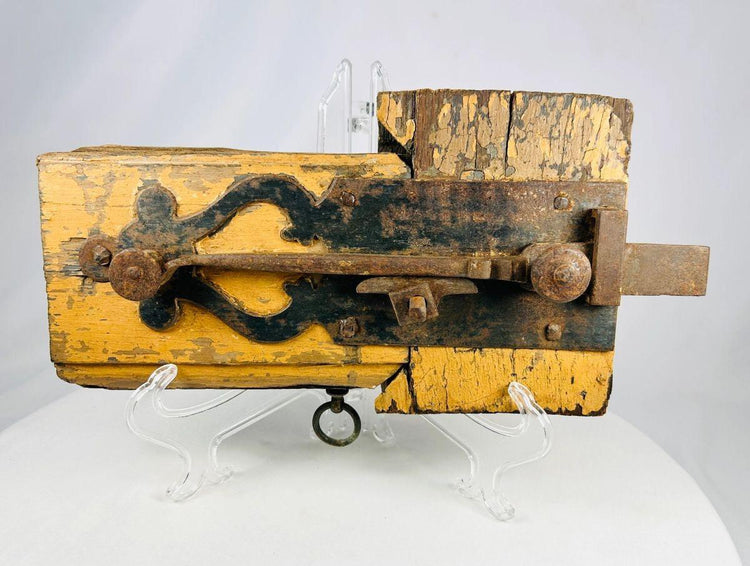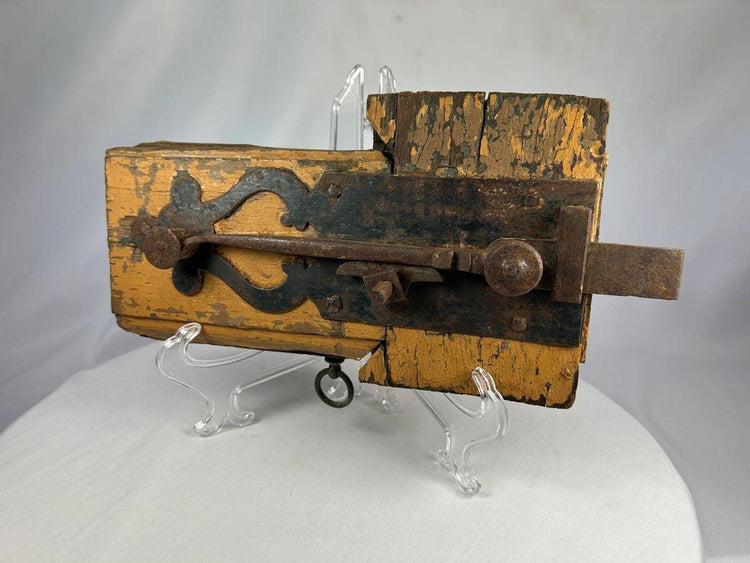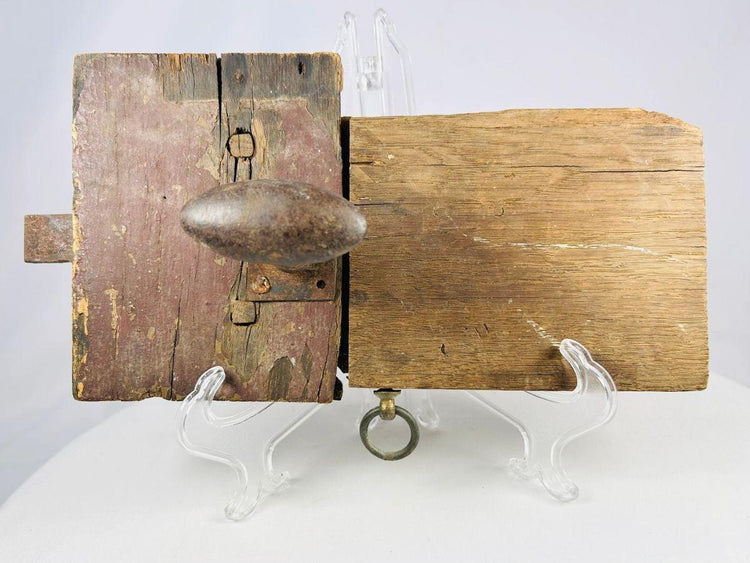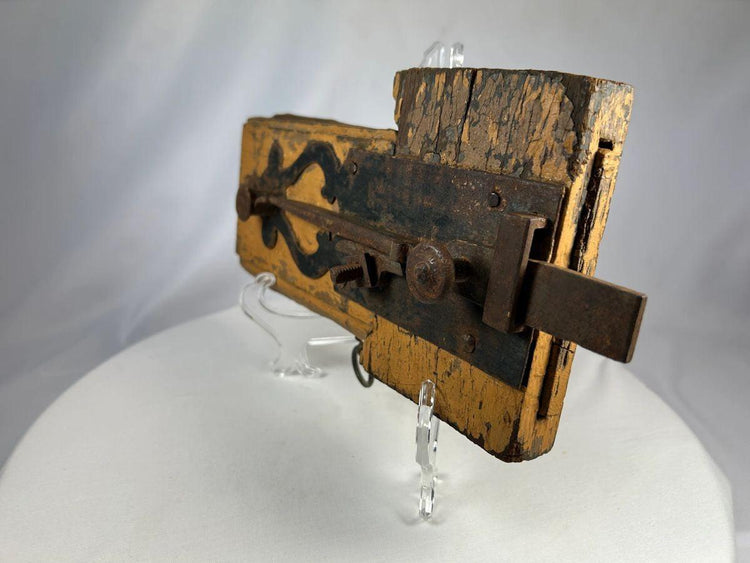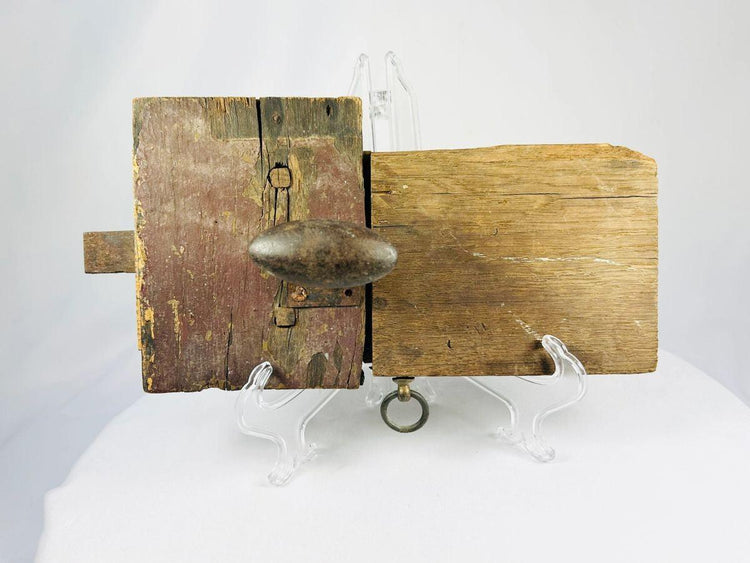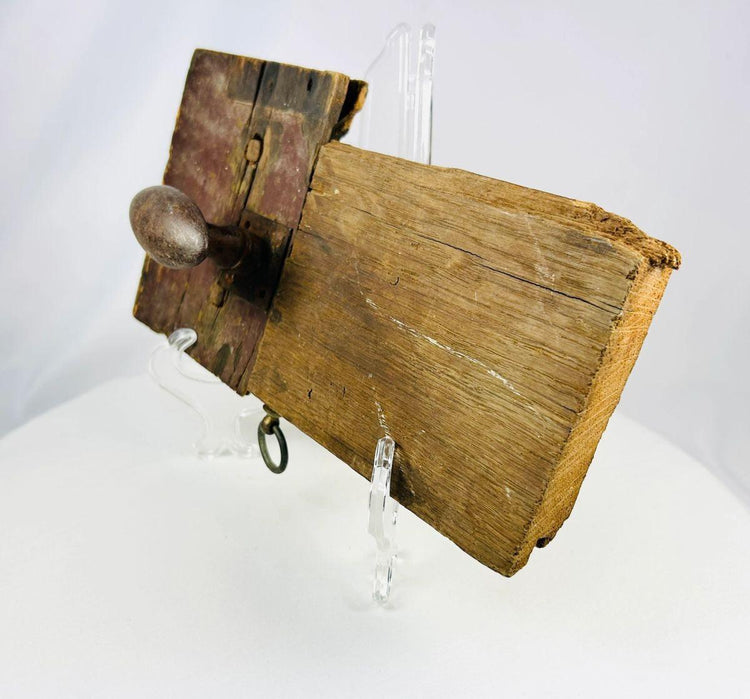Colonial Wooden Locking Mechanism with Hand-Forged Hardware | 18th Century
Description
More
Less
Historical Context & Origin
Region: Colonial North America
Material: Hardwood with hand-forged iron
Period: Circa 1750–1820
Description
This rare hand-crafted wooden door lock and latch mechanism is a remarkable example of early colonial ingenuity and craftsmanship. Complete with its original hand-forged iron bar and decorative scrollwork backing plate, it reflects the resourcefulness of 18th-century settlers. The lock is constructed from aged hardwood with visible hand-cut joinery and peg construction, paired with wrought iron fittings that have developed a rich, rusted patina over centuries of use. Remnants of ochre and brown paint remain on the surface, further enhancing its character and authenticity. Such locks were commonly used on rural homes, barns, and early American buildings prior to the advent of mass-produced hardware.
Features
- Original sliding iron latch with decorative scroll plate
- Hand-turned wooden handle with iron hardware
- Retains original iron ring pull beneath the latch
- Traces of original ochre paint with naturally weathered surface
- Evidence of hand-cut joinery and pegged construction
Cultural Significance
Locks of this kind served not only as functional security devices but also as decorative expressions of early colonial craftsmanship. Each example was handmade by blacksmiths and carpenters, embodying the self-sufficiency of settlers in rural North America. The survival of such a piece provides a tangible connection to daily life during the 18th century, reflecting both practicality and artistry in architectural hardware.
Condition
The lock remains in stable condition with expected wear from age and use. The hardwood shows surface splitting, traces of old paint, and natural weathering, while the ironwork retains a deep, oxidized patina. No modern repairs or restorations are present, ensuring the authenticity and integrity of this colonial artifact.
Dimensions (approximate)
Width: 11 in
Age
Approximately 200–275 years old
Description
Historical Context & Origin
Region: Colonial North America
Material: Hardwood with hand-forged iron
Period: Circa 1750–1820
Description
This rare hand-crafted wooden door lock and latch mechanism is a remarkable example of early colonial ingenuity and craftsmanship. Complete with its original hand-forged iron bar and decorative scrollwork backing plate, it reflects the resourcefulness of 18th-century settlers. The lock is constructed from aged hardwood with visible hand-cut joinery and peg construction, paired with wrought iron fittings that have developed a rich, rusted patina over centuries of use. Remnants of ochre and brown paint remain on the surface, further enhancing its character and authenticity. Such locks were commonly used on rural homes, barns, and early American buildings prior to the advent of mass-produced hardware.
Features
- Original sliding iron latch with decorative scroll plate
- Hand-turned wooden handle with iron hardware
- Retains original iron ring pull beneath the latch
- Traces of original ochre paint with naturally weathered surface
- Evidence of hand-cut joinery and pegged construction
Cultural Significance
Locks of this kind served not only as functional security devices but also as decorative expressions of early colonial craftsmanship. Each example was handmade by blacksmiths and carpenters, embodying the self-sufficiency of settlers in rural North America. The survival of such a piece provides a tangible connection to daily life during the 18th century, reflecting both practicality and artistry in architectural hardware.
Condition
The lock remains in stable condition with expected wear from age and use. The hardwood shows surface splitting, traces of old paint, and natural weathering, while the ironwork retains a deep, oxidized patina. No modern repairs or restorations are present, ensuring the authenticity and integrity of this colonial artifact.
Dimensions (approximate)
Width: 11 in
Age
Approximately 200–275 years old
You May Also Like



























